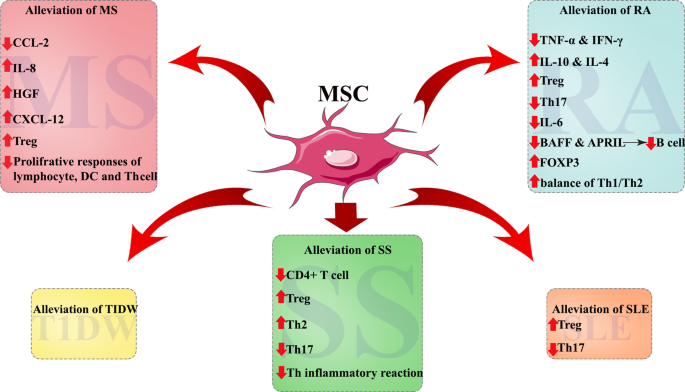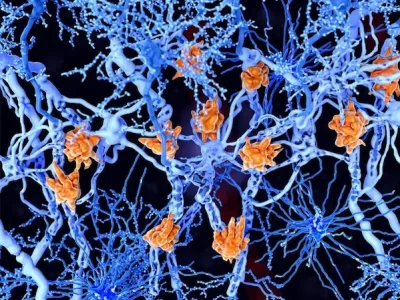3 Simple Techniques For Regenerative Medicine For Multiple Sclerosis
Wiki Article
8 Easy Facts About Regenerative Medicine For Multiple Sclerosis Explained
Table of ContentsGetting The Regenerative Medicine For Multiple Sclerosis To WorkTop Guidelines Of Regenerative Medicine For Multiple SclerosisThe Facts About Regenerative Medicine For Multiple Sclerosis UncoveredThings about Regenerative Medicine For Multiple SclerosisThe Buzz on Regenerative Medicine For Multiple SclerosisGetting My Regenerative Medicine For Multiple Sclerosis To WorkLittle Known Questions About Regenerative Medicine For Multiple Sclerosis.
The mesenchymal stem cells hair transplanted throughout stem cell therapy can divide and mature to form new cells that can replace the damaged cells of the anxious tissue. This could restore neurological functions in people with this problem. These advantages of stem cell treatment are additional sustained by the capacity of MSCs to promote healing.People with several sclerosis are usually treated with mesenchymal stem cells. These are multipotent stem cells that have the ability to separate and grow to create a large range of cell key ins the body. As soon as hair transplanted, these stem cells can create to form healthy afferent neuron therefore sustaining the regeneration of the damaged tissues of the nerve system.
Once hair transplanted, the stem cells migrate to locations of inflammation or damage within the main nerves (CNS). They are normally brought in to the websites of injury where the body immune system is assaulting the myelin sheath, the protective treatment of nerve fibers. The stem cells work by promoting the repair and regeneration of harmed myelin, possibly restoring feature to impacted nerve cells.
Regenerative Medicine For Multiple Sclerosis Can Be Fun For Anyone
Stem Cell Research Study on MS The National Several Sclerosis Society, along with various other organizations, is actively moneying and sustaining research study into mesenchymal stem cell therapy for numerous sclerosis to discover their potential and improve treatment methods. The objective is to develop more secure and much more efficient ways to make use of stem cells in dealing with MS.
The smart Trick of Regenerative Medicine For Multiple Sclerosis That Nobody is Talking About
Here are reviews from evaluations of clients Swiss Medica clinic. The client took a trip from Romania looking for treatment for MS after hearing positive comments regarding stem cell treatment for the condition.Get a free online consultation to learn how stem cells will function for your situation, and what are the period and cost of the therapy. Clinical Expert, Swiss Medica medical professional Lemus, H. N., Warrington, A. E., & Rodriguez, M. (2018 ). Multiple Sclerosis: Systems of Condition and Approaches for Myelin and Axonal Repair.
Regenerative Medicine For Multiple Sclerosis Fundamentals Explained

Stem cells are cells in the body that can grow into specialized cells that serve a certain function. They are likewise able to produce precise duplicates of themselves. There are two primary kinds of stem cells: embryonic stem cells and adult stem cells. are discovered in the developing embryo and can develop into the majority of kinds of cells in the body.
are located in some adult cells and body organs consisting of the bone marrow, skin, blood, and mind. Grown-up stem cells are not as versatile as embryonic stem cells and click here now are consequently much more minimal in terms of the kinds of cells they mature into. The distinct buildings of stem cells offer pledge for brand-new treatments that can slow/halt MS disease task and fixing cells damages in the central nerves.
Facts About Regenerative Medicine For Multiple Sclerosis Uncovered

The procedure entails gathering stem cells from a person's own (autologous) bone marrow. The person is then treated with radiation treatment to diminish the immune system and stem cells are reestablished right into the body where they mature into new, healthy immune cells - Regenerative Extra resources Medicine for Multiple Sclerosis. Stem cells can be infused right into the body in various ways

In 2000, the MS Culture of Canada and MS Scientific Study Foundation funded a clinical test including HSC transplants, led by Drs. Mark Freedman and Harry Atkins from the Ottawa Hospital Research Study Institute/University of Ottawa. The aHSC treatment available in Canada is a therapy that makes use of high-dose radiation treatment, additionally called conditioning.

Regenerative Medicine For Multiple Sclerosis Can Be Fun For Anyone
Neural stem cells (NSC) are located in the brain and can grow right into different sorts of mind cells consisting of neurons, oligodendrocytes, and astrocytes. NSCs might offer to repair or protect the mind and regulate the immune system. Early clinical trials in non-human primates demonstrated that treatment with NSCs benefitted the progression of MS-like disease in pet models.The arise from these safety researches are positive for future stem cell and regenerative medication therapies in MS. Future medical tests (phase 2 and 3) with bigger numbers of individuals and controls are needed to assess the efficiency of this therapy for MS. As shown by the instances over, there is a huge variety of research taking place that will supply additional solutions regarding using stem cells to treat MS.
Stem cell treatment is thought about safe, yet, like any clinical procedure, it brings some risks, such as momentary swelling or pain at the shot site. Serious you can look here side impacts are rare when performed by certified specialists.
The Buzz on Regenerative Medicine For Multiple Sclerosis
Several sclerosis (MS) is a persistent condition of the main nerve system that influences the mind and spine. It is characterized by the degradation of myelin, a material that covers nerve fibers, causing disruptions in communication in between the mind and the remainder of the body. Signs and symptoms can vary extensively and include muscle weakness, vision problems, imbalance, and exhaustion.Numerous sclerosis is identified by the body immune system erroneously striking the protective sheath (myelin) that covers nerve fibers, causing communication issues between the brain and the rest of the body. The disease can bring about the deterioration or long-term damages of nerves. Signs vary commonly among people and can consist of fatigue, flexibility problems, discomfort, and cognitive modifications.
Report this wiki page